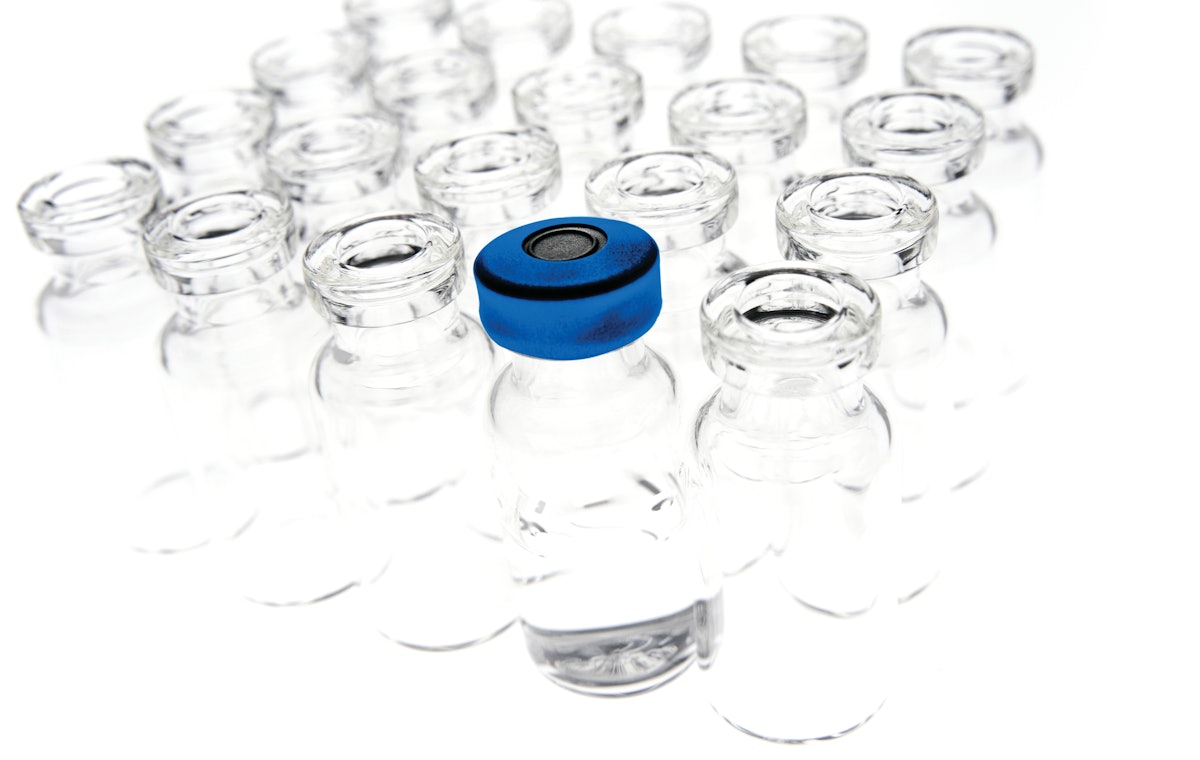Automated Visual Inspection Of Lyophilized Vials: Overcoming Key Challenges

Table of Contents
Challenges in Manual Lyophilized Vial Inspection
Manual inspection of lyophilized vials is a labor-intensive and error-prone process. The limitations significantly impact production efficiency and product quality.
High Labor Costs and Time Constraints
The cost of employing a large workforce for manual inspection is substantial. Salaries, training, and potential overtime expenses add up considerably. Furthermore, the process itself is time-consuming, creating significant production bottlenecks.
- Example Costs: Salaries for inspectors, training programs, overtime pay, and potential agency staffing costs.
- Production Delays: Backlogs in inspection leading to delayed shipments, missed deadlines, and potential loss of revenue.
Subjectivity and Variability in Human Inspection
Human inspectors have varying levels of experience and attention to detail, leading to inconsistencies in inspection results. This subjectivity introduces the risk of both missed defects and false positives.
- Human Errors: Missed cracks, undetected particulate matter, misjudgments of fill levels, and incorrect classification of minor defects.
- Consequences: Release of defective products, increased risk of patient harm, costly recalls, and damage to brand reputation.
Difficulties with Detecting Subtle Defects
Many defects in lyophilized vials are subtle and difficult to detect with the naked eye. Cracks, minute particulate matter, and inconsistencies in fill levels require keen observation and specialized lighting.
- Subtle Defects: Microscopic cracks, small particles within the vial, variations in the appearance of the lyophilized cake, and inconsistencies in the seal.
- Impact: Undetected defects compromise product quality, potentially leading to reduced efficacy or adverse reactions in patients.
Advantages of Automated Visual Inspection Systems for Lyophilized Vials
Automated visual inspection systems offer significant advantages over manual methods, addressing the shortcomings discussed above and improving overall production efficiency.
Enhanced Accuracy and Consistency
Automated systems provide objective and consistent inspection results, minimizing human error. Advanced image processing algorithms analyze each vial with precision and uniformity.
- Improved Accuracy Rates: Automated systems achieve significantly higher accuracy rates compared to manual inspection, reducing the risk of releasing defective products.
- Reduced Variability: Consistent inspection criteria and automated analysis eliminate the variability inherent in manual inspection.
Increased Throughput and Efficiency
Automation dramatically increases inspection speed, leading to higher production capacity and reduced turnaround time. This efficiency boost translates to significant cost savings and improved time-to-market.
- Inspection Speed: Automated systems can inspect hundreds or thousands of vials per hour, compared to the significantly slower pace of manual inspection.
- Production Throughput: Increased inspection speed directly translates to higher production throughput, allowing for greater output with the same workforce.
Cost Savings and ROI
While the initial investment in an automated system is significant, the long-term cost benefits are substantial. Reduced labor costs, improved quality control, and minimized product waste contribute to a strong return on investment (ROI).
- Labor Cost Reduction: Automated systems significantly reduce the need for a large inspection workforce.
- Reduced Rework and Waste: Improved accuracy minimizes the need for rework or disposal of defective vials.
- ROI Calculation: A comprehensive ROI analysis should consider factors like initial investment, operational costs, labor savings, waste reduction, and increased production capacity.
Data Acquisition and Analysis
Automated systems collect and analyze large amounts of inspection data, providing valuable insights into process performance and quality trends. This data-driven approach allows for continuous improvement and proactive problem-solving.
- Data Types: Defect types, frequencies, locations within the vial, and other process parameters.
- Process Optimization: Data analysis helps identify root causes of defects, enabling proactive adjustments to improve manufacturing processes and reduce defects.
Overcoming Technological Challenges in Automated Lyophilized Vial Inspection
Implementing automated visual inspection systems requires addressing several technological challenges.
Dealing with Variations in Vial Appearance
Variations in vial color, transparency, and labeling can affect image analysis. Advanced image processing algorithms are crucial for handling these variations and ensuring consistent inspection results.
- Solutions: Advanced algorithms that compensate for lighting variations, background noise, and color differences. Sophisticated image filtering techniques to isolate defects from the vial's features.
Ensuring Robustness Against Environmental Factors
Lighting and temperature fluctuations can influence the performance of automated systems. Robust system designs and controlled environments are necessary to minimize these effects.
- Mitigation Strategies: Controlled lighting conditions, temperature-stable inspection chambers, and advanced algorithms that compensate for environmental variations. Robust system designs that are resistant to vibrations and other environmental factors.
Integration with Existing Production Lines
Seamless integration of automated systems into existing manufacturing workflows is essential. Careful planning and consideration of compatibility with existing equipment and data management systems are crucial.
- Integration Considerations: Compatibility with existing manufacturing execution systems (MES), data transfer protocols, and physical integration into the production line.
Conclusion: Optimizing Lyophilized Vial Inspection with Automation
Manual inspection of lyophilized vials is plagued by high labor costs, inconsistencies, and difficulties in detecting subtle defects. Automated visual inspection of lyophilized vials offers a transformative solution, significantly improving accuracy, efficiency, and cost-effectiveness. Automated systems provide objective, consistent results, increased throughput, valuable data analysis capabilities, and a strong return on investment. By addressing the technological challenges associated with variations in vial appearance and environmental factors, and by ensuring seamless integration with existing production lines, you can maximize the benefits of this vital technology. Invest in automated visual inspection of lyophilized vials today and experience the transformative benefits of enhanced accuracy, efficiency, and cost savings.

Featured Posts
-
 Lets Stop Here Why John Wick Shouldnt Continue
May 11, 2025
Lets Stop Here Why John Wick Shouldnt Continue
May 11, 2025 -
 Magic Blowout Propels Celtics To Division Title
May 11, 2025
Magic Blowout Propels Celtics To Division Title
May 11, 2025 -
 Possible Papal Candidates Analyzing The Leading Cardinals
May 11, 2025
Possible Papal Candidates Analyzing The Leading Cardinals
May 11, 2025 -
 Crazy Rich Asians Tv Series Release Date And Cast News
May 11, 2025
Crazy Rich Asians Tv Series Release Date And Cast News
May 11, 2025 -
 Nba Sixth Man Of The Year Payton Pritchard Makes Celtics History
May 11, 2025
Nba Sixth Man Of The Year Payton Pritchard Makes Celtics History
May 11, 2025
